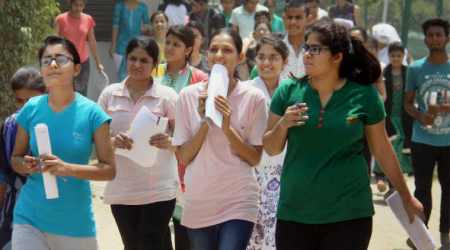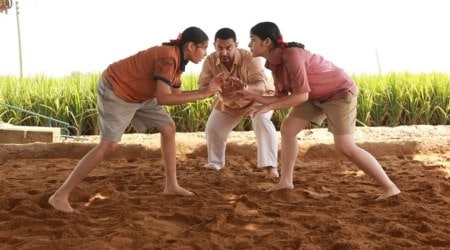 Vivan Sundaram in a still from the film. Express Archive
Vivan Sundaram in a still from the film. Express Archive
Crises of identity, conflict and how it relates to people living the everyday — Pankaj Butalia’s work as a filmmaker has covered these grounds. He completed a trilogy on conflict-laden states in 2015, comprising A Landscape of Neglect (Assam), Texture of Loss (Kashmir) and Manipur Song (Manipur). In his latest production, In Search of the Found Object, Butalia offers a glimpse into the mind of 74-year-old contemporary artist Vivan Sundaram, whose body of work is reflective of a lot of what Butalia himself has tried showcasing on film. Excerpts from an interview with Butalia:
When and how did the idea to make this film come to you?
I thought about doing something on Vivan when I saw his works Gagawaka and Post-Mortem — both of which indicated sudden bursts of energy from this person who had been an artist for almost half a century. I started shooting in early 2014 without any idea whether there’d be a film at the end of it. But here it is, finally.
Given how art, political as it may be, can often be a bit removed from the average person, how do you view Sundaram’s art in the context of his politics?
Vivan’s art is much more directly connected with his political vision than mine is. There is a restlessness in his work — almost as if it is difficult, if not impossible, to be sure where the interpretation lies or what the connections are. I have a different notion of the political though that may not seem too obvious from seeing the ‘Conflict’ trilogy. I’m comfortable with the political in my work revealing itself slowly — sometimes over time.
In Yeh Kahaan Aa Gaye Hum, you chose Nida Fazli, a literary figure, as your subject, and now Sundaram. Any plans of making it a trilogy, like your films on Manipur, Kashmir and Assam?
I’d like to imagine that but this has been a bit of an accident. I was lucky to run into what I’d say is a progressive period of Films Division, when it encouraged independent ‘outside’ productions. There’s some uncertainty about it now but, I’d like to work on Shanti Hiranand — a very underrated singer, an unnoticed legend who is still in our midst.
As a filmmaker, how different or difficult is it to capture the essence of a political subject vis-a-vis a more artistic one, like Sundaram or Fazli?
Each film has its own crisis. All my films — be it the trilogy or the two films on Nidaji and Vivan — I felt wouldn’t be of interest to anyone and I’d seem like a huge fraud trying to deal with something bigger than me, but then you stick with it, give it time and care, let it mature and one day, it starts falling in place by itself.

